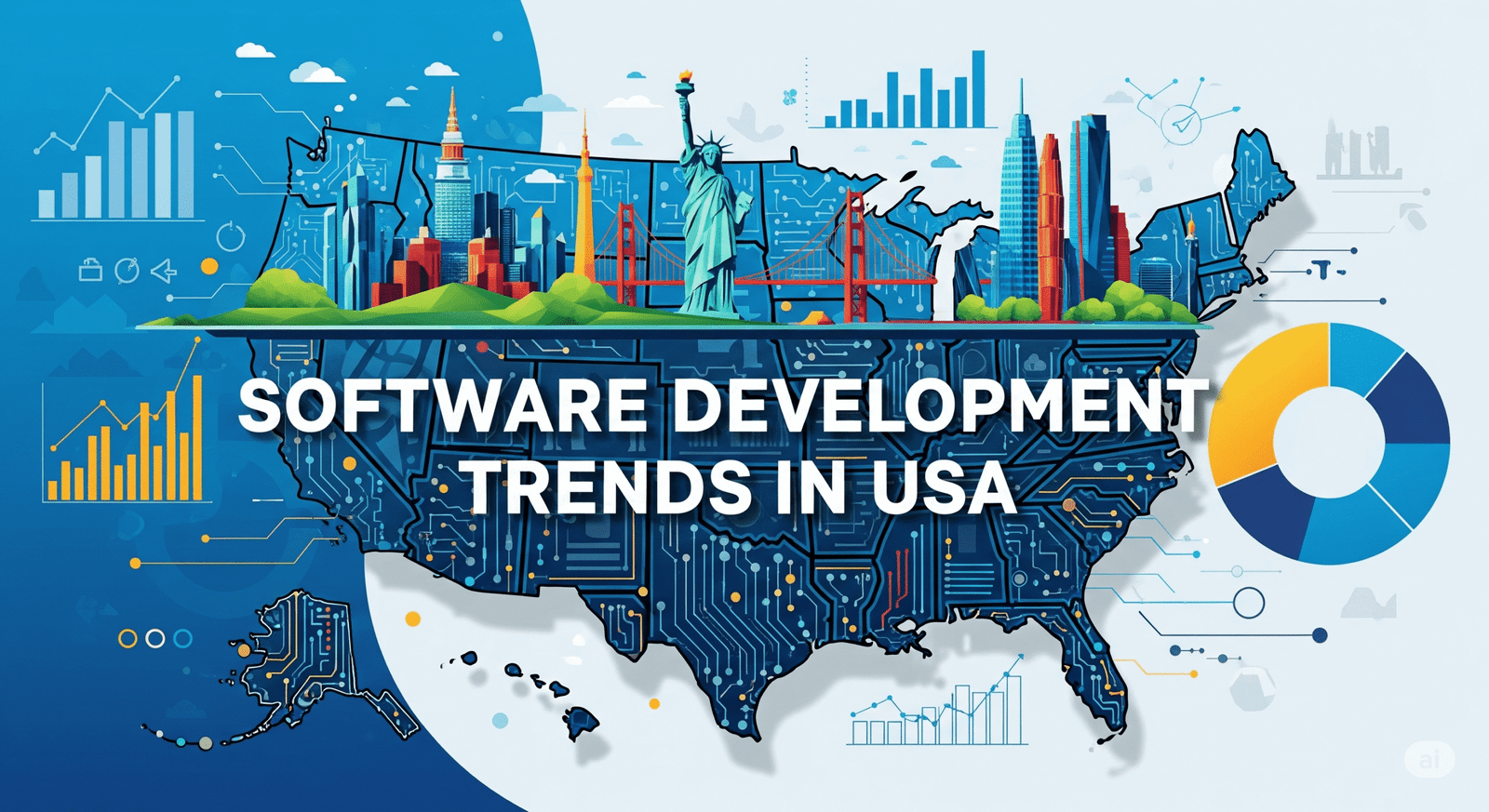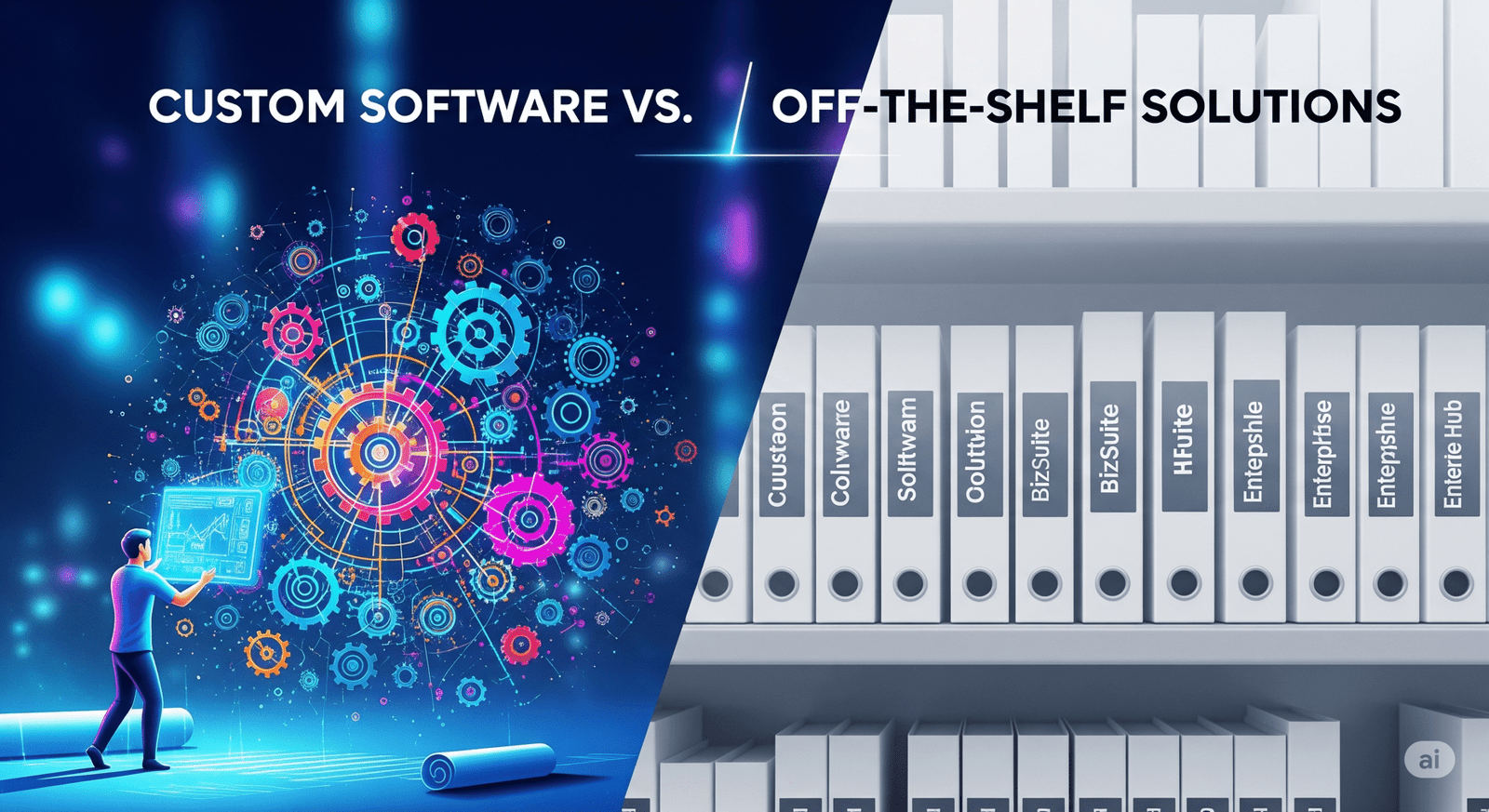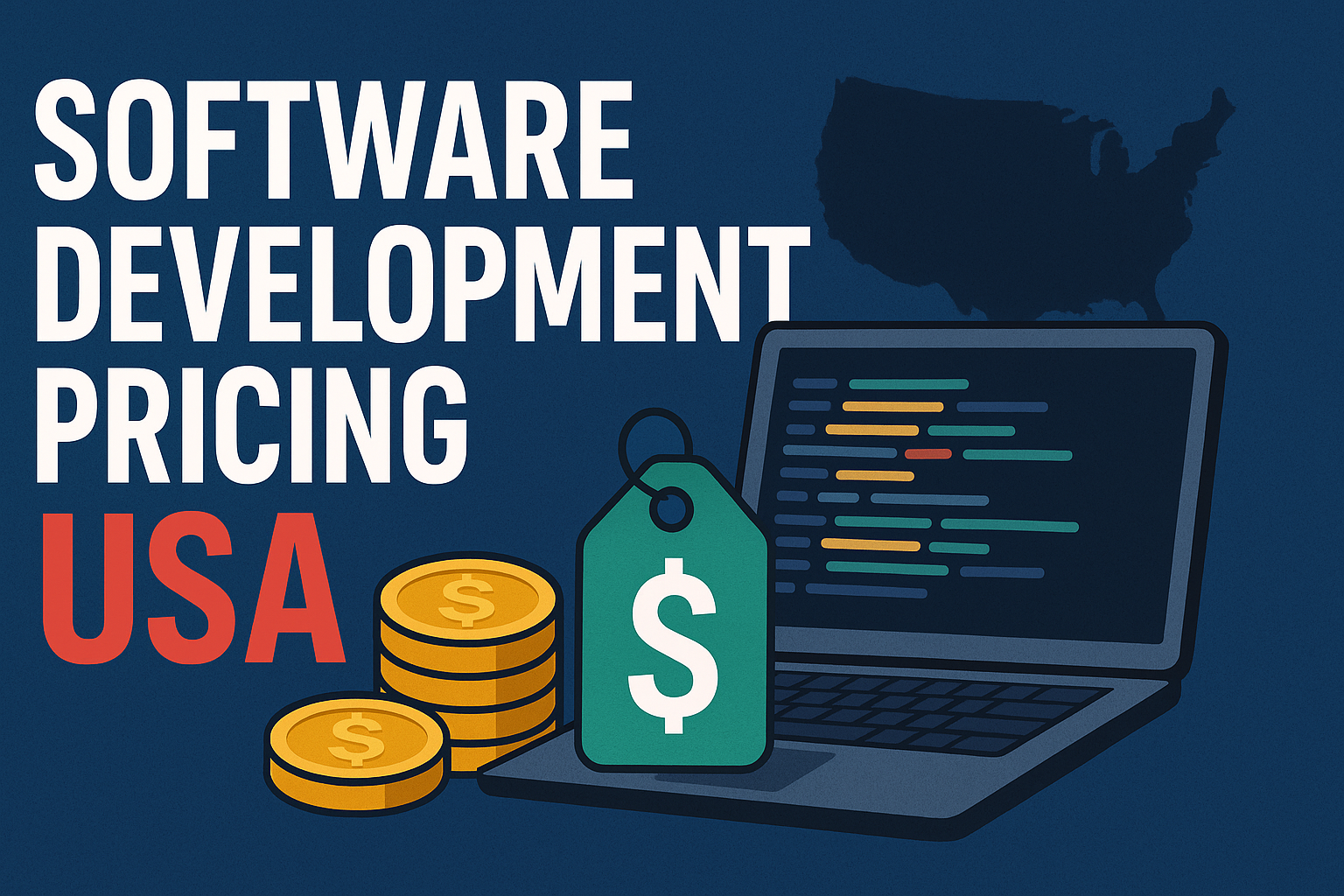Introduction
The software development trends in the United States is evolving at an unprecedented pace, driven by advancements in artificial intelligence, cloud computing, cybersecurity, and more. Businesses and developers must stay ahead of these trends to remain competitive in an increasingly digital world.
This blog explores the most impactful software development trends in the USA for 2024 and beyond, covering emerging technologies, methodologies, and best practices that are transforming the industry.
1. The Rise of AI and Machine Learning in Software Development
Artificial Intelligence (AI) and Machine Learning (ML) are no longer futuristic concepts—they are now integral to modern software development.
Key Trends in AI/ML Development:
- AI-Powered Code Generation (GitHub Copilot, Amazon CodeWhisperer)
- Automated Testing & Debugging (AI-driven QA tools)
- Predictive Analytics for Business Intelligence
- Natural Language Processing (NLP) in Chatbots & Virtual Assistants
Companies like Google, Microsoft, and OpenAI are leading the charge, integrating AI into developer tools to enhance productivity and reduce manual coding efforts.
2. Cloud-Native Development & Serverless Architectures
Cloud computing continues to dominate, with businesses shifting from traditional on-premise solutions to cloud-native development.
Major Trends in Cloud Computing:
- Kubernetes & Containerization (Docker, AWS ECS)
- Serverless Computing (AWS Lambda, Azure Functions)
- Multi-Cloud & Hybrid Cloud Strategies
- Edge Computing for Low-Latency Applications
The demand for scalable, cost-efficient cloud solutions is pushing companies like Amazon Web Services (AWS), Microsoft Azure, and Google Cloud to innovate rapidly.
3. The Growth of Low-Code/No-Code Platforms
Not every business can afford a team of expert developers. Low-code/no-code (LCNC) platforms are democratizing software development by enabling non-technical users to build applications.
Popular LCNC Platforms in the USA:
- OutSystems
- Mendix
- Microsoft Power Apps
- Bubble
These tools are particularly useful for startups, SMBs, and enterprises looking to accelerate digital transformation without heavy coding.
4. Cybersecurity-First Development
With increasing cyber threats, security is no longer an afterthought—it’s a core part of the software development lifecycle (SDLC).
Key Cybersecurity Trends:
- Zero Trust Architecture
- DevSecOps (Integrating Security into DevOps)
- AI-Driven Threat Detection
- Compliance with Regulations (GDPR, CCPA, HIPAA)
Companies like CrowdStrike, Palo Alto Networks, and Fortinet are setting new standards in secure software development.
5. Progressive Web Apps (PWAs) & Cross-Platform Development
Mobile app development is shifting towards Progressive Web Apps (PWAs) and cross-platform frameworks to reduce costs and improve performance.
Leading Frameworks:
- Flutter (Google)
- React Native (Meta/Facebook)
- SwiftUI & Jetpack Compose for Native Apps
PWAs offer offline functionality, faster load times, and seamless updates, making them a preferred choice for businesses.
6. Blockchain & Web3 Development
While the crypto market fluctuates, blockchain technology remains a game-changer for secure, decentralized applications.
Emerging Trends in Blockchain:
- Smart Contracts (Ethereum, Solana, Cardano)
- NFT Marketplaces & Digital Ownership
- DeFi (Decentralized Finance) Applications
- Enterprise Blockchain (Hyperledger, R3 Corda)
Major U.S. companies like Coinbase, ConsenSys, and Ripple are investing heavily in blockchain innovation.
7. Microservices & API-First Development
Monolithic architectures are being replaced by microservices, enabling better scalability and maintainability.
Key Benefits of Microservices:
- Independent Deployment & Scaling
- Faster Development Cycles
- Improved Fault Isolation
Companies like Netflix, Uber, and Spotify rely on microservices to handle massive user traffic efficiently.
8. The Impact of Quantum Computing
Though still in its early stages, quantum computing is poised to revolutionize software development by solving complex problems exponentially faster than classical computers.
Quantum Computing Leaders in the USA:
- IBM Quantum
- Google Quantum AI
- Microsoft Azure Quantum
Potential applications include drug discovery, cryptography, and optimization problems.
9. DevOps & Continuous Integration/Continuous Deployment (CI/CD)
The DevOps culture is now standard, with CI/CD pipelines ensuring faster, more reliable software releases.
Top DevOps Tools in 2024:
- Jenkins
- GitLab CI/CD
- CircleCI
- GitHub Actions
Automation in testing, deployment, and monitoring is reducing human error and accelerating time-to-market.
10. Sustainable & Green Software Development
As environmental concerns grow, green computing is becoming a priority.
Ways to Develop Sustainable Software:
- Energy-Efficient Coding Practices
- Server Optimization & Reduced Resource Usage
- Carbon-Aware Cloud Computing
Tech giants like Google and Microsoft are committing to carbon-neutral data centers.
11. Voice & Conversational AI Integration
Voice-enabled applications (Alexa, Google Assistant) and AI-driven chatbots are transforming user interactions.
Key Developments:
- Voice Search Optimization
- Conversational AI for Customer Support
- Multimodal AI (Text + Voice + Vision)
Businesses are leveraging these technologies to enhance user experience (UX) and accessibility.
12. The Future of Remote & Distributed Development Teams
The remote work revolution has reshaped software development, with distributed teams becoming the norm.
Trends in Remote Development:
- Async Collaboration Tools (Slack, Notion, GitHub)
- Global Talent Hiring (Freelancers, Offshore Teams)
- Virtual Pair Programming & Code Reviews
Companies like GitLab and Automattic (WordPress) operate fully remotely, proving that location is no longer a barrier.
Conclusion: Staying Ahead in the Evolving Tech Landscape
The U.S. software development industry is at the forefront of innovation, with AI, cloud computing, cybersecurity, and blockchain leading the charge. Businesses that embrace these trends will gain a competitive edge, while those that resist risk falling behind.
By staying informed and adapting to these software development trends, developers, startups, and enterprises can build cutting-edge solutions that meet tomorrow’s demands.


